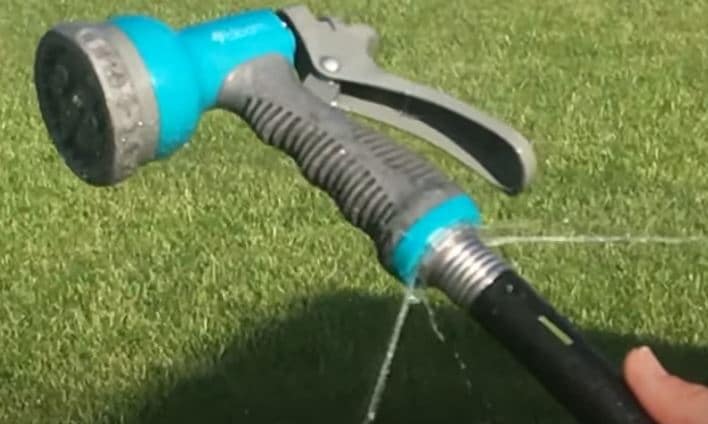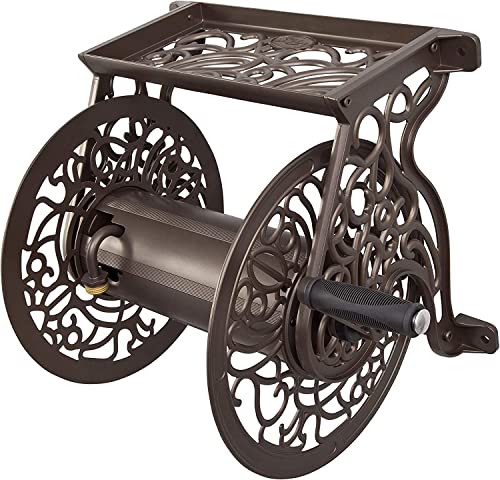A garden hose is a very essential tool to have if you have your own yard for gardening purposes. A hose is used to carry water from a central water source to all the areas of the garden to nurture the plants and even to clean and maintain the garden. But the most common problem with a hosepipe is that it keeps on leaking and is inevitable. In almost every garden you pass by, you will notice that the hosepipe is leaked.
This happens because water creates pressure and sometimes the hose pipe is unable to take in the pressure, therefore causing a leak. The leaked hose pipe is a very problematic issue as it disrupts the flow of water and sprinkles water to areas where it’s not needed, thus wastage occurs.
Knowing the location of the leak will make it very easy to find a solution. The article on why does my garden hose leak will provide an all-in-one solution to the problems depending on the location of the leak, and methods to prevent hose pipes from leaking in the first place, before you call the plumber or go out to replace your garden hose.
Garden Hose Pipe Components
Before going straightaway to the solutions, you need to be introduced with some of the components of hose pipes. You need to know the names of the components because we will provide you with a comprehensive guide to fixing your problem relating to these terms.
Faucet (Hose Bib)
This device controls the flow of liquid (water in this case) out of a pipe (garden hose). Basically, it’s near the source of water which allows you to turn the flow of water on and off or slow or fast.
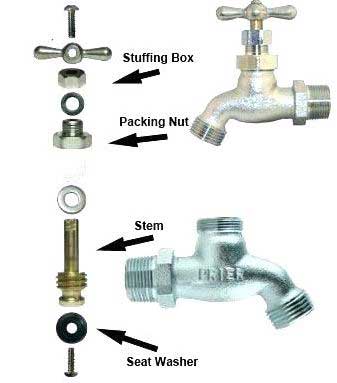
Hose Connector
Hose connectors are used to connect a hose pipe to a tap near the faucet or connect it with a sprinkler or even with another hose pipe to increase the length. Hose connectors are also used to connect more than one hose pipe with the tap.
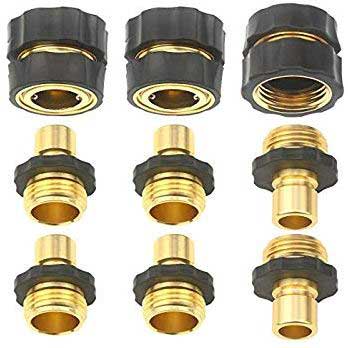
Packing Nut
The pressing nut is the piece of the valve inside the spigot that provides a waterproof cap around the tap stem.
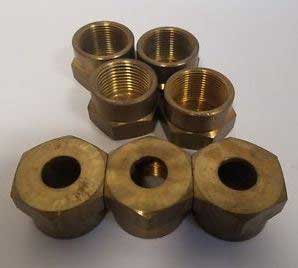
Gasket
A gasket is a mechanical seal that fills the space between at least two mating surfaces, by and large, to keep spillage from or into the joined articles while under pressure.
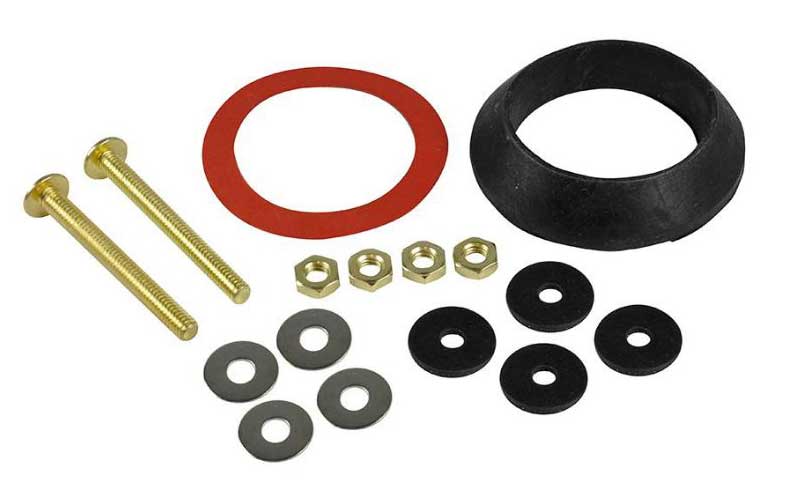
Washer
A washer is inside a spigot which is a thin level ring of metal or elastic and is set over a fastener before the nut is in a bad way on. It is located in between the packing nut and spindle.
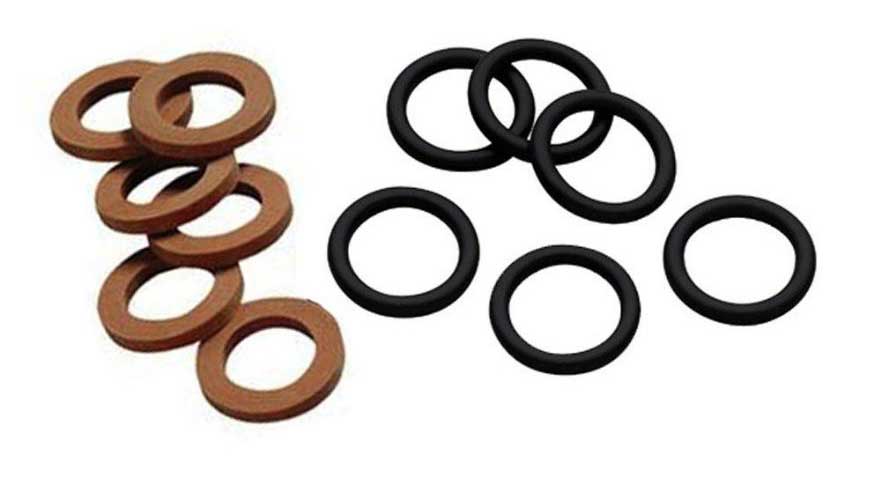
Faucet Leak
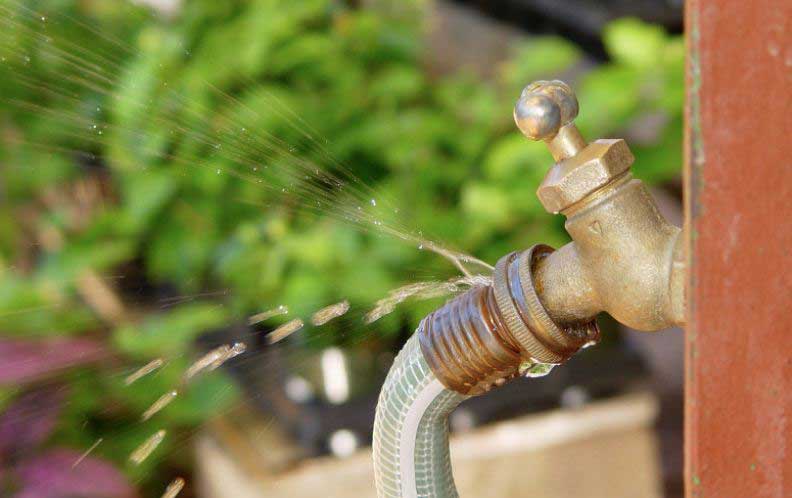
The hosepipe is connected to the faucet with a packing nut. Whenever there is a leak in the faucet, there is usually a problem with the packing nut. If you find out that your hose pipe is leaking, it may be possible that the packing nut is not tight.
Therefore, you must open the handle and tighten the packing nut with a wrench until it stops. If that doesn’t work, loosen the packing nut and pull it towards the hose. Then wrap around 8 inches of Teflon tape or cello tape and wrap it around the stem of the faucet in the place of the nut.
Then push back the nut and tighten it. It is also possible that the main washer inside the hose bib is worn out and needs to be replaced. To fix the washer, the whole faucet needs to be pulled out from the wall.
First, turn off the main water source as water will spill out continuously if this step is not followed. Release any extra water left to avoid getting wet. The washer is at the end of the hose bib. Unscrew the washer and replace it with a new one. Then insert the hose bib back into the wall.
Hose Connector Leak
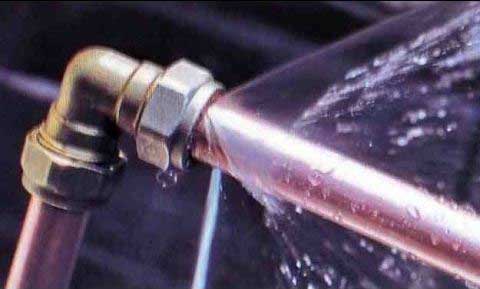
If there is a leak in the hose connector, the first solution is to tighten the connector with the faucet. If that doesn’t work, then you must change the gasket. Sometimes the gasket is missing or may even be worn out before you even notice. So, if you don’t have it, then get one.
Although the gasket creates a great seal but changing the flat gasket with an O-ring creates does a much better job. To remove the gasket, just use a flat head screwdriver to pop it out and place the new one by pushing it down until its secure. The diameter of the gasket matters. The gasket is easily available in all hardware stores.
Sometimes leaking also occurs because of the loosely connected hose connector. To fix this, you will have to go inside the hose connector to check if it’s arranged properly or if anything is missing. To do this, first, turn off the tap and release pressure from the hose i.e. drain all the water away from the hose using the sprinkler and remove the fitting from the tap.
Then unscrew the yellow nut from the connector and by using a small screwdriver, remove the white split ring from inside the connector. If the fitting seems tough to remove, don’t panic. Put the opening of the hose in a cup of hot water for around four to five seconds. This softens the hose pipe which will, in turn, loosen the fitting making it easier to remove.
After the hose is revealed, one possible problem might be that the hose doesn’t have a straight cut. So, remove the white split ring and by using secateurs, cut who’s as straight as possible. After this is done, replace the white split ring on the hose and then put it back on hot water for roughly five seconds to make it easy to insert back the yellow nut.
It is important that the yellow nut fits the hose properly leaving no space for air or water. So, insert it as hard as possible all the way to the base of the fitting. Finally, tighten the nut and that should make it secure with no leaks.
Hose End Leak
Hose end under the fittings can often be worn out because of the temperature fluctuations, from continual flexing near and around the connections or from water that freezes within the hose.
To fix this problem, cut off the end of the hose under the fitting and buy a hose fitting repair kit to swap the ends. Since these only costs a small fraction of a hose replacement, you will practically get a new hose for free. If that doesn’t work, you will need to change the hose end.
To change the hose end, snip off the existing hose end. To do this, you will need a hose barb kit. The box will include a clamp and a hose barb. The clamp needs to be stuck with the hose first, followed by the hose barb which will go at the end of the hose pipe. Once done, slide the clamp up to the middle of the barb and tighten it with a screwdriver.
Hose Leak
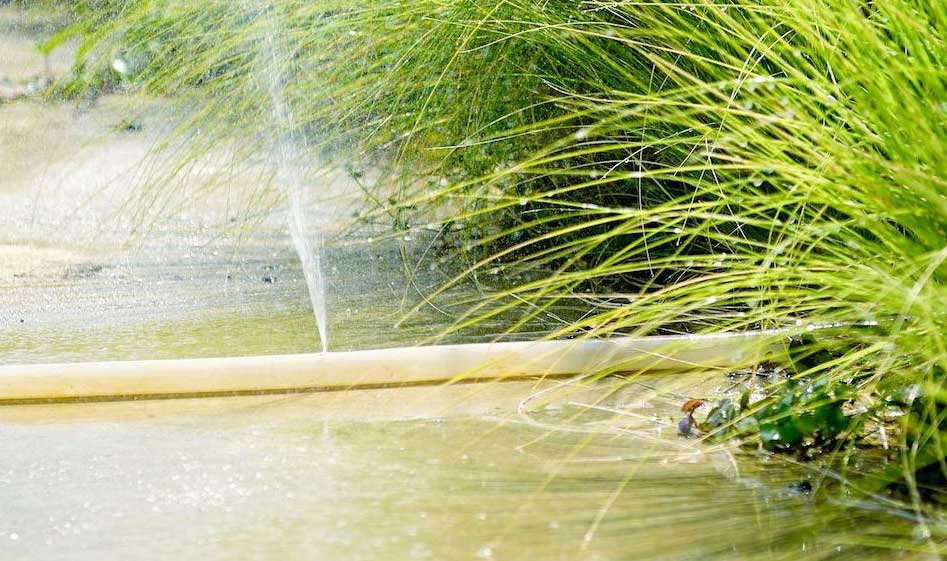
A hole in the hose pipe itself is the most common location of a hose pipe leak. Although they can be easily solved by filling up the hole with rubber cement or a tire puncture repair kit, the solution we are going to describe here is much better than sealing the hole with glue or tape.
This involves cutting your pipe and removing the section where the hole sits. Now your hose pipe has many parts that need to be connected again by installing a hose repair kit which is also called hose menders. A hose repair kit comprises two locks and a coupler. Here as well, the clamp will go first at the end of the hose pipe, followed by the coupler.
Then slide the clampdown over the coupler and tighten it. Repeat the same procedure for the other end. This solution is not recommended if you have multiple hose leaks as it might be easier to purchase a new hose pipe.
In A Nutshell
You are advised to take immediate action as soon as you notice the leak and locate the exact location of it. The solutions mentioned above are not permanent solutions to fixing hose pipe leaks as having a leak is inevitable due to a change in water pressure, temperature and even weather.
The continuous usage of tap causes the tap to eventually loosen out causing the leak. Even the hose connectors looser their fitting over time so, it requires regular maintenance to avoid leaky hose pipes.
Most of the time it’s a cause of loose-fitting and that is an easy fix. If some parts require to be changed, then follow the instructions on this article. If your problems are much more severe, then think no further and call your nearest plumber.
Final Word
Remember, a leaky hose should have you rushing out to buy a new one! Once you’ve located your problem, you should easily, conveniently and inexpensively be able to fix any faucet, fitting end, or hose leak with ease and a quick trip to the hardware store.
